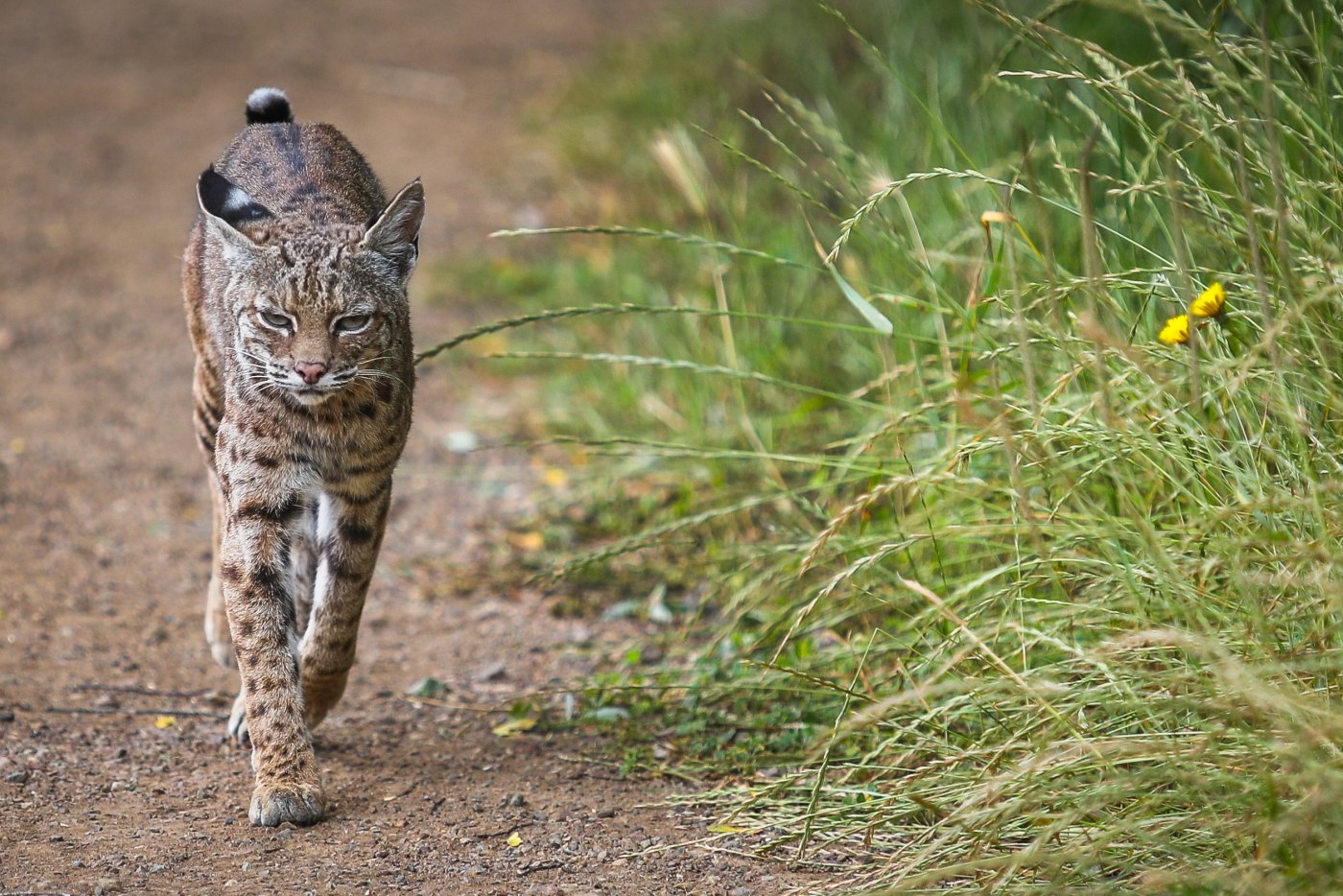
DEAR JOAN: We’ve recently seen a bobcat, once in our backyard walking on our deck right past the sliding screen door, and then again two days ago walking in the front of the house from the house next door, past our house to the two neighbors’ houses.
Related Articles
Here’s what to know if you encounter a snake in the Bay Area
The tiny creatures that can turn a California outing into an ordeal
Meet the ‘clever’ sea pansy found off California coast
Understanding your dog’s body language
Did a Gold Country peacock and turkey make a love match?
Are they looking for food? We live in a court right near Los Alamitos Creek. We do not have any pets and neither do any neighbors on our side of the court.
Also we found some scat — probably from the bobcat — next to our house in an area where we just have little stones filling the area.
What do you suggest to spray where the scat is after we remove it? Will it come back and leave some more?
Any hints will be appreciated.
— Maryke WIlliams, Almaden
DEAR MARYKE: Although it can be disconcerting to see a wild animal casually strolling through your neighborhood, bobcats don’t usually pose a threat to humans. Known attacks on people have all been because the bobcat was threatened and protecting itself, or the cat had rabies, which now that I say it doesn’t sound as reassuring as I hoped.
RELATED: California is natural habitat for mountain lions. Here’s what to do if you encounter one
You’re probably seeing only one bobcat and yes, most likely it was looking for food, which can include small pets, rodents, chickens and other birds, and smallish wildlife. Your neighborhood could be part of its territory, or it might also have just been passing through.
Even though you don’t have pets, you and your neighbors should take a look at what you might accidentally be offering the bobcat, such as water from pools, fountains or birdbaths. Overgrown shrubs might be providing shelter. Bird feeders also might interest a bobcat, not because it likes birdseed, but because it likes the birds and rodents that like the birdseed.
Those who do have pets and small children should never leave them outside unattended, and if a bobcat wanders in an area where you don’t want it, make loud noises or toss tennis balls in its direction to scare it away.
You can try commercial wildlife deterrents, available at your favorite home improvement store, or you can soak rags in ammonia and scatter them about. I’d spray some ammonia on the rocks after you’ve cleaned up the scat to help discourage future visits.
DEAR JOAN: I have a large bird bath in front of my window where I have been watching birds for over 50 years. I have noticed that doves do two things that other birds don’t: they kiss and they drink water like a horse instead of the dip and pour method that other birds use. Are they the only ones?
— Dick McCall, Woodside
DEAR DICK: The anatomy of the pigeon and dove beak is different from other birds. While most birds scoop their beaks into the water and then tilt their heads up to swallow, members of the Columbidae family (pigeons and doves) use their beaks like a straw, sucking up the water. They are the only birds so gifted.
They are not the only birds that appear to kiss, however. Many others do, including parrots and bald eagles. It can be a sign of affection between mated pairs, or an exchange of food.
The Animal Life column runs on Mondays. Contact Joan Morris at [email protected].